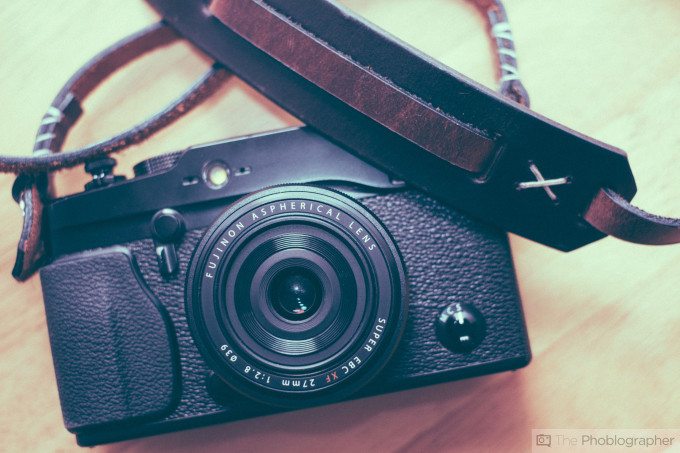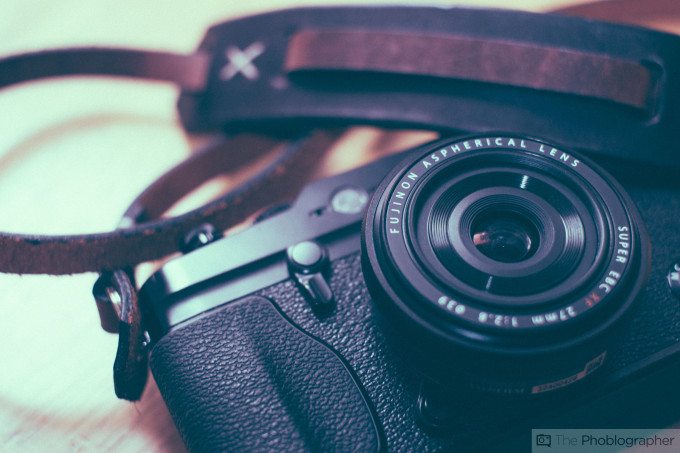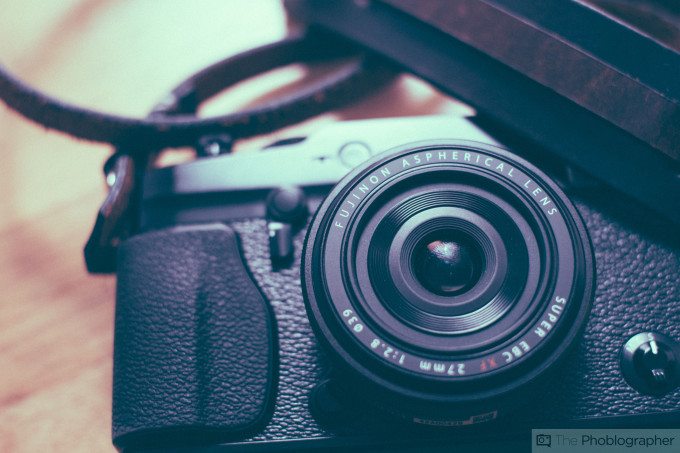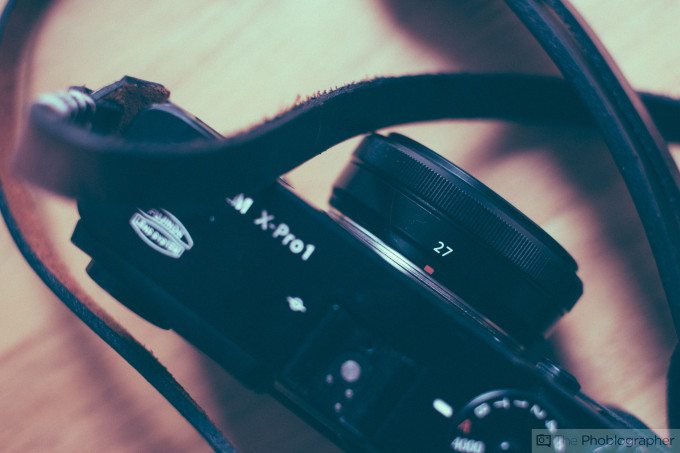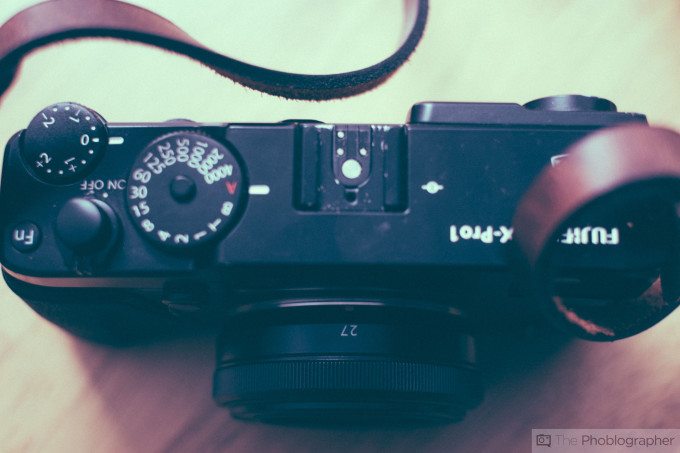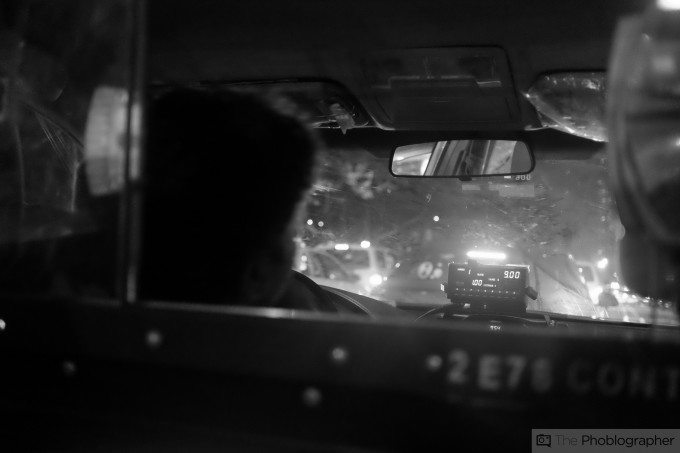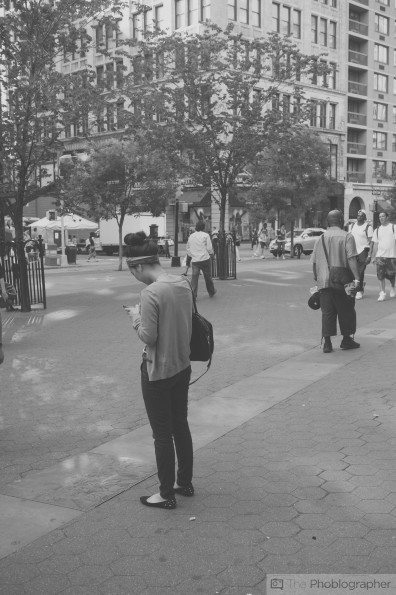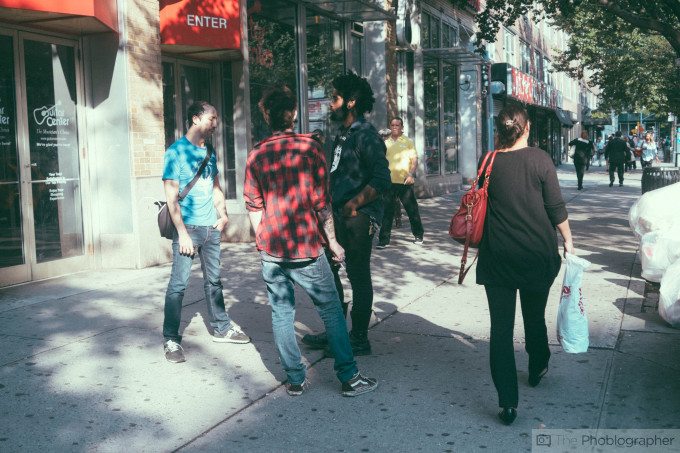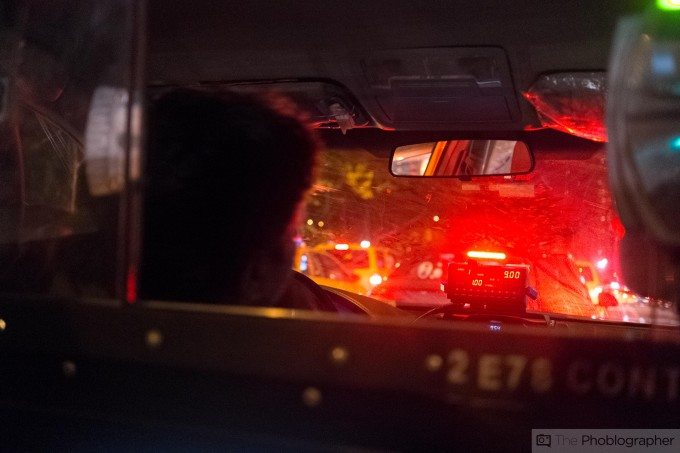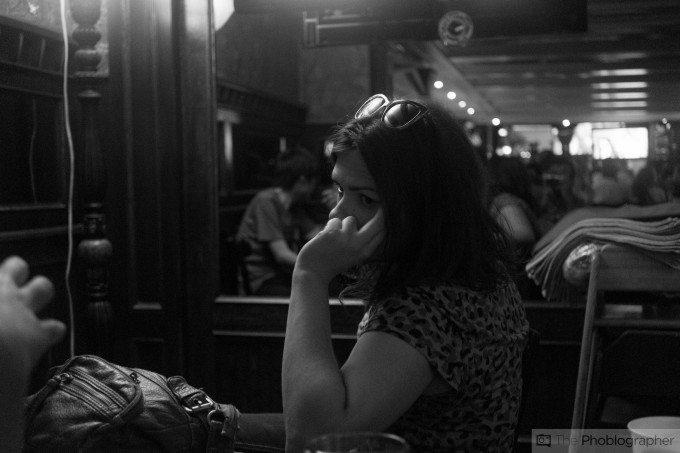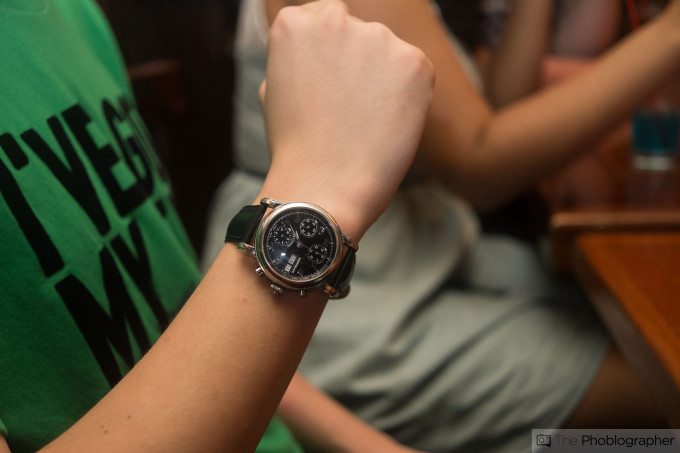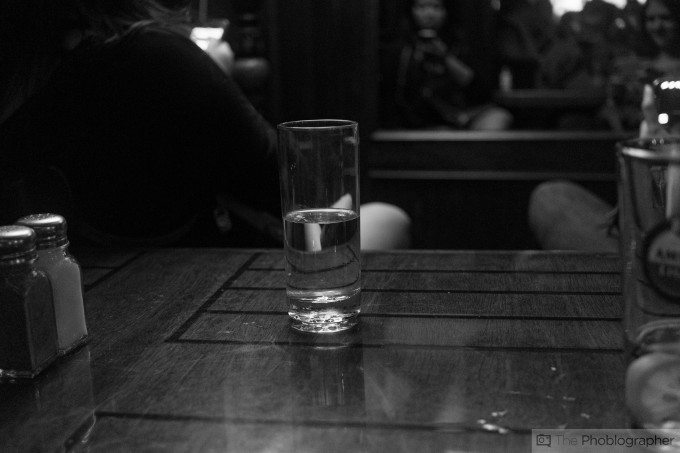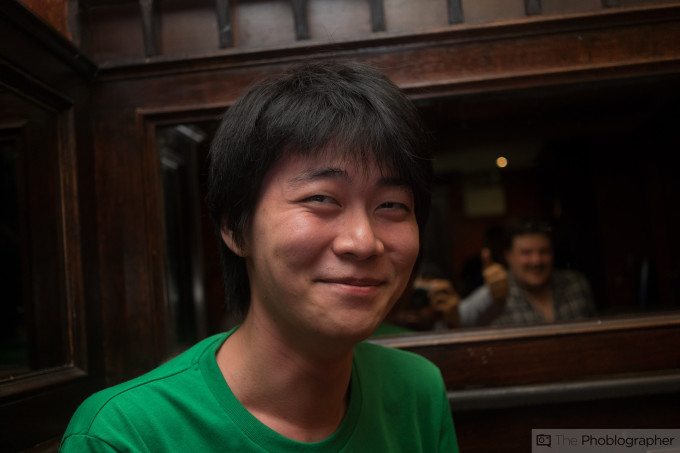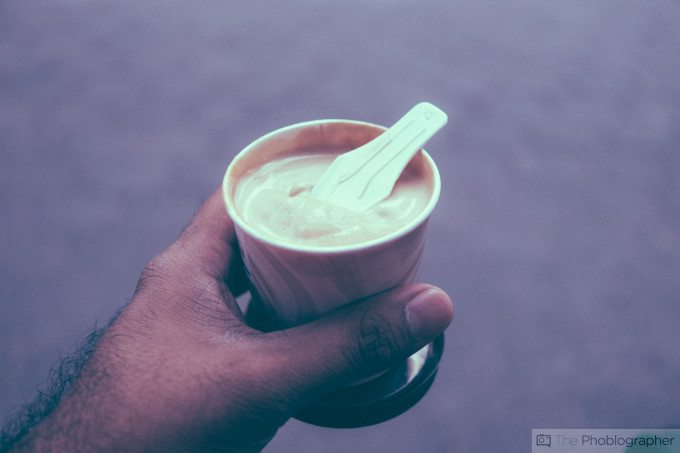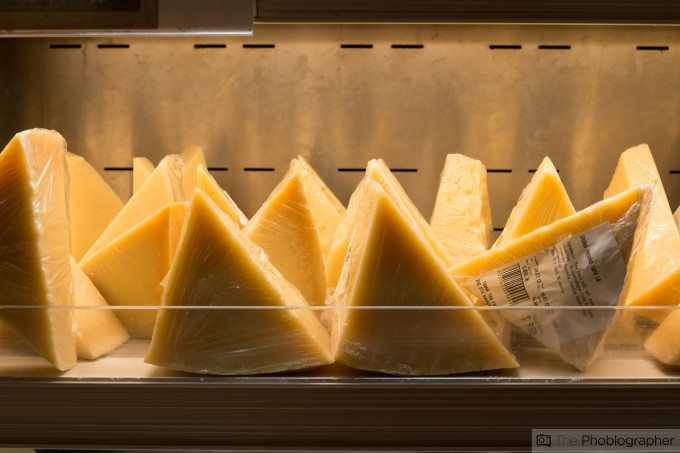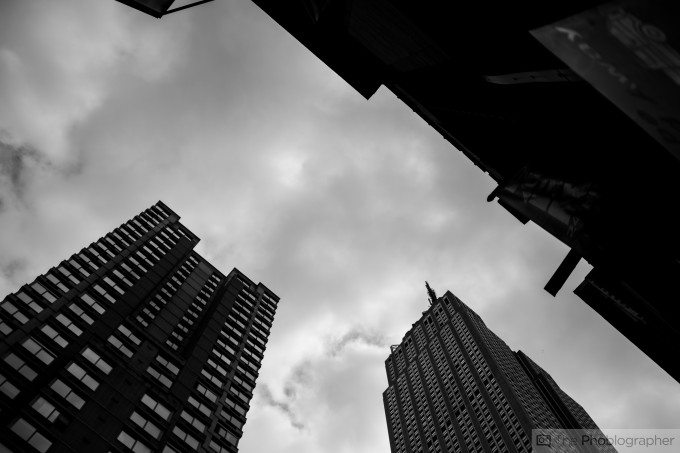When Fujifilm first announced their 27mm f2.8 pancake lens, lots of photographers probably got excited because it was the first pancake lens for the system and the company’s rapidly growing additions. But many photographers also asked for something like the 23mm f2 on the X100s. And while this lens is longer and slower, it may well end up glued to the camera of a particular type of photographer. It exhibits high image quality and excellent build quality.
But it isn’t perfect.
Pros and Cons
Pros
– Compact size
– Sharp image quality
– Low profile look
– Fast to focus
Cons
– An aperture ring would have been preferred
– Macro focusing doesn’t really work out so well
Gear Used
We used the Fujifilm 27mm f2.8 with the Fujifilm X Pro 1 and the XM-1.
Tech Specs
Tech Specs taken from the PictureLine listing of the unit
| Manufacturer | Fuji |
|---|---|
| Manufacturer SKU | 16389123 |
| UPC | 074101022674 |
| Aperture | f/2.8 |
| Color | Black |
| Mount Type | Fuji-X |
| Stabilization | n/a |
| Lens Type | Fixed Focal Length |
| Circular Filter Size | 39mm |
| Focus Type | Autofocus |
Ergonomics
This section was taken from our first impressions post
The 27mm f2.8 is a lens that is both small, low profile, and modern. Of any of Fujifilm’s lenses so far, this one has one of the most modern designs that we’ve seen. This observation is due to the fact that there is no aperture ring–which the rest of the system has. Indeed, the lenses of many other camera systems don’t have the aperture ring and for this reason, Fujifilm’s departure from their retro-modern appeal may not be too much to the liking of Leica-philes who jumped ship.
But if you choose to get up close and personal with the lens, you’ll notice an extremely minimal design to it. The lens is one of the few primes that doesn’t come with a lens hood–and perhaps this is because Fujifilm wanted to keep it as compact as possible. After all, what’s the point of having a pancake if it’s jutting out?
When you look right down on the lens, you’ll realize that there is a sliver of a focusing ring in case you want to use Fujifilm’s manual focusing system coupled with their peaking feature. And to once again keep the lens compact, they got rid of the aperture ring.
Build Quality
Fujifilm’s 27mm f2.8 is built pretty damn solidly. After a couple weeks of use, it survived being tossed around in a camera bag like a rag doll at times. This is the first lens that we’ve used that also hasn’t suffered scratches to the finish. While Fujifilm did a great job building this lens, we still yearn for an aperture ring like the one on the X100s.
Ease of Use
You can’t really knock the ease of use of this lens either: you point, you shoot, and you look at your images in awe if you nailed them. Manually focusing is a different story though and we recommend that you use focus peaking for the best results. But otherwise, you’ll need to work with the back dial on your camera if you want to change the aperture.
If your shutter dial is set to A, you’ll need to stop the lens down using the back camera dial beyond f16 in order to put it in full auto/program mode. If you tamper with it otherwise, you’ll have full aperture control. Experienced Fujifilm X series users will need to get used to it, as it is some totally new muscle memory.
Autofocus
Luckily, we didn’t have much of a problem autofocusing with this lens. It is slightly faster than the much older Fujifilm 35mm f1.4 R in some situations, although you really have to be looking for the extra performance. Even in low light situations, as long as the reticule was placed over a high contrast area and dialed into being the right size we didn’t see much of an issue.
Overall performance though still makes this lens sit behind competitive offerings from other camera systems. However, this has more to do with Fujifilm’s autofocus performance in their cameras.
Image Quality
The 27mm f2.8 is a lens that has some excellent image quality–in terms of stances we feel that it isn’t as sharp as the 35mm f1.4 but it is sharper than the 18mm f2, 14mm f2.8, and the 60mm f2.5 lenses. At its heart, we would probably place this lens as the second sharpest in the bunch. Going even further, we believe that this is the lens that street photographers will truly reach for. Not only does the low profile look of it not attract attention but you’ll almost never need to stop it down. Due to the f2.8 maximum aperture, you’ll really never really find any really creamy bokeh and stopping it down beyond f5.6 is useless in many situations. Because of this, it might appeal most to the “F8 and be there” crowd–who number amongst some of the truest and rawest street photographers. The lens also doesn’t even focus very closely in Macro Mode and when we shot the photo above we were still not as close as we’d like to be.
Color Rendition
The Fujifilm 27mm f2.8 doesn’t offer as punchy a color output as its other siblings–even when your camera is set to Velvia (vivid) mode. We felt that the colors weren’t saturated enough for us, and we’re used to much more vibrant colors from Fujifilm. If anything, this hammers home our belief that this is the lens for the F8 and be there crowd of street photographers as that crowd will also most likely want to shoot with their camera in Black and White. When working in black and white, the sharpness and renderings become just like film but with loads and loads of details.
Color Fringing
Throughout our tests, we found no color fringing so to speak of when shooting with this lens. Even when we turned up the contrast a bit in the post-production phase, we couldn’t find any hints of it. Users that want to shoot color photos with this lens will be pleased that they have one less slider to manipulate in Adobe Lightroom 5.
Bokeh
We need to state just how difficult it can be to get bokeh with this lens. We really wish that the 27mm f2.8 focused closer–and we see no real reason why it can’t. Perhaps Fujifilm might fix this in a firmware update like they did with other lenses. This would be the best way to see bokeh in your subject matter.
From the bokeh that we were able to get, we believe that it leans more towards the hazy side than the creamy side. However, it isn’t really distracting in any way–which is also a major plus.
Sharpness
As we stated earlier on in the review, we don’t have a single problem with the sharpness that this lens offers. At f2.8 it already is very sharp and only gets better until f5.6. After that, don’t even bother unless your exposure really needs it.
Folks that love to pixel peep might want to stay away from this lens as it may become the equivalent of sniffing crack–but only through visual stimulation over realizing that their lens is just this sharp. Pixel for pixel though, it still isn’t as sharp as the company’s 35mm f1.4 lens.
Extra Image Samples
Conclusions
We’ve got mixed feelings about the Fujifilm 27mm f2.8 lens. For starters, we believe that it isn’t a lens for everyone but many might appreciate the pancake size. It is fast to focus, sharp, and built very well. But it’s tough to get bokeh (which isn’t a bad thing for some photographers), the color doesn’t pop as much (which can also be great for the black and white crowd), and it has quite the price tag. We’re not sure if we can justify it to ourselves, but we’ve been dying for a pancake lens for the X series system. And if baffles us as to why Fujifilm won’t give users something just like the 23mm f2 lens on the X100s.
If you’re a street shooter that also shoots JPEGs (and we know that there are tons of you on the streets of NYC producing lots of wonderful work) then we see you springing for this. But everyone else should stick to the better options that are out there.
Recommended Cameras and Accessories
Fujifilm X Pro 1: The X Pro 1 has loads and loads of film rendering options that will help you take the most advantage of this lens’s capabilities. Plus, we see users that love their optical viewfinders sticking this lens on the camera and never taking it off. The X Pro 1 has had loads of firmware updates and it focuses fairly quick with the 27mm f2.8.
Fujifilm XE 1: The XE 1 is the X Pro 1’s little brother, and also focuses quite fast. It’s smaller size but balanced ergonomics might make it a better fit for the 27mm f2.8.
Please Support The Phoblographer
We love to bring you guys the latest and greatest news and gear related stuff. However, we can’t keep doing that unless we have your continued support. If you would like to purchase any of the items mentioned, please do so by clicking our links first and then purchasing the items as we then get a small portion of the sale to help run the website.
Also, please follow us on Facebook, Flickr and Twitter.


